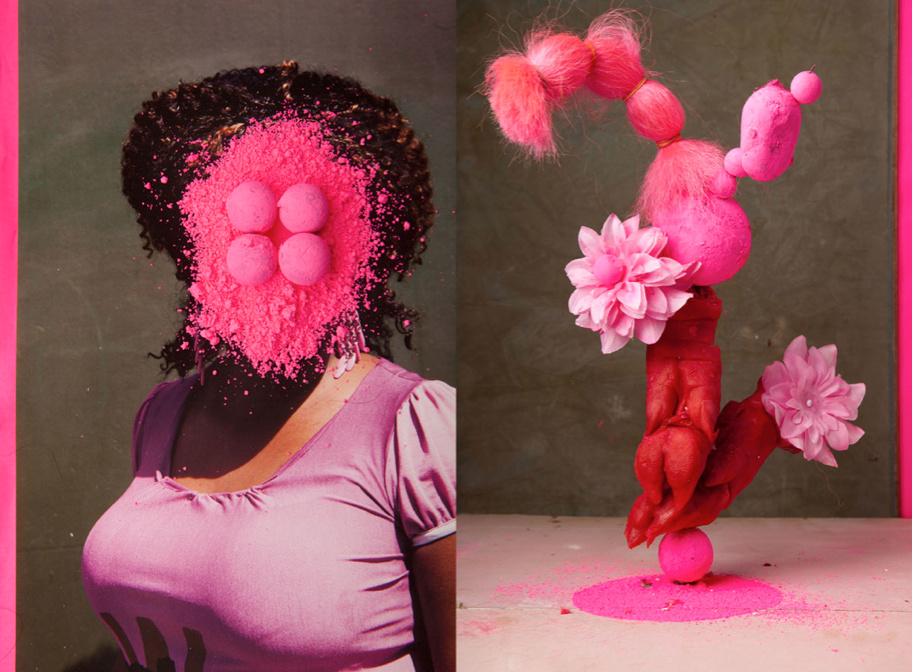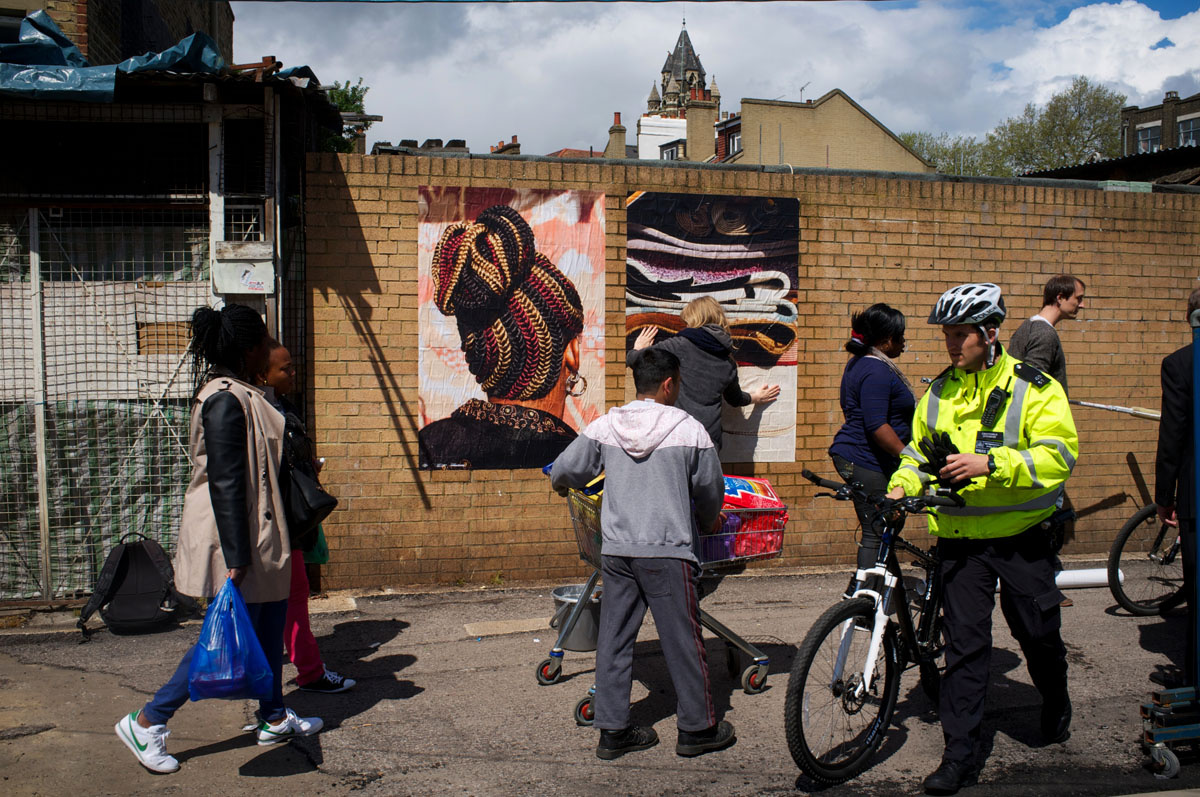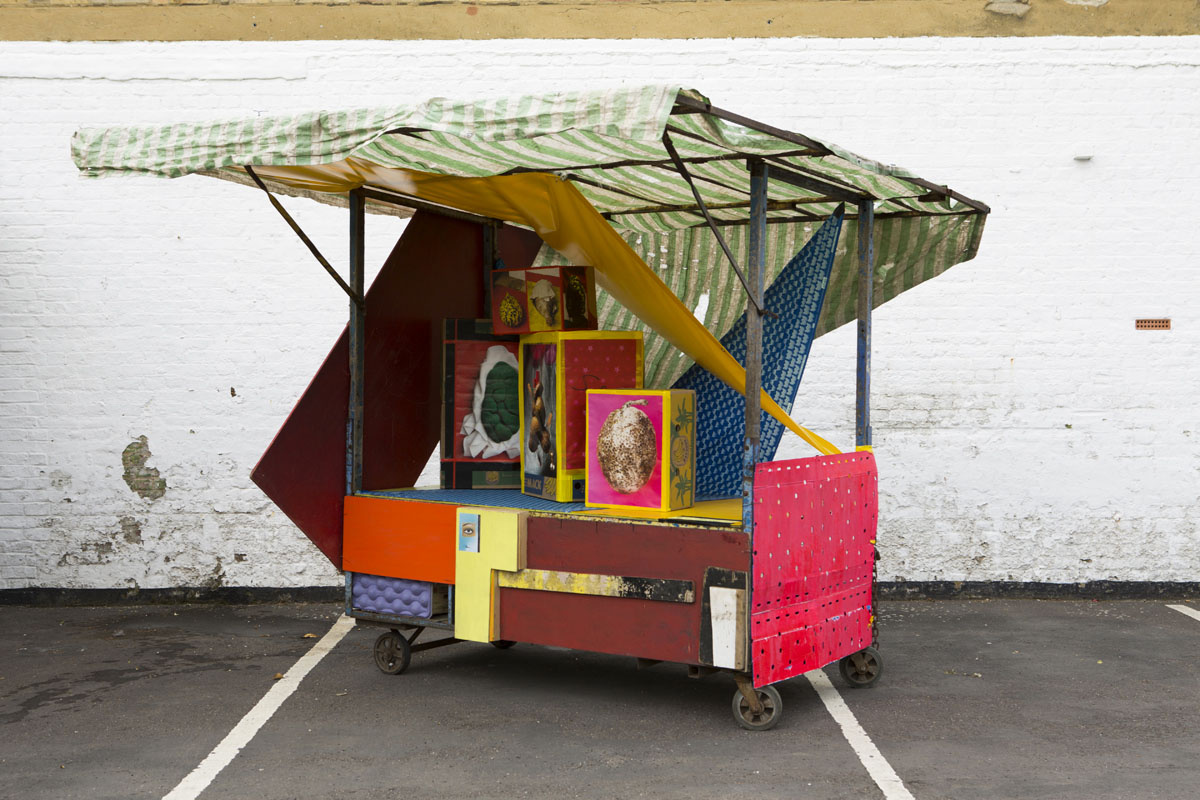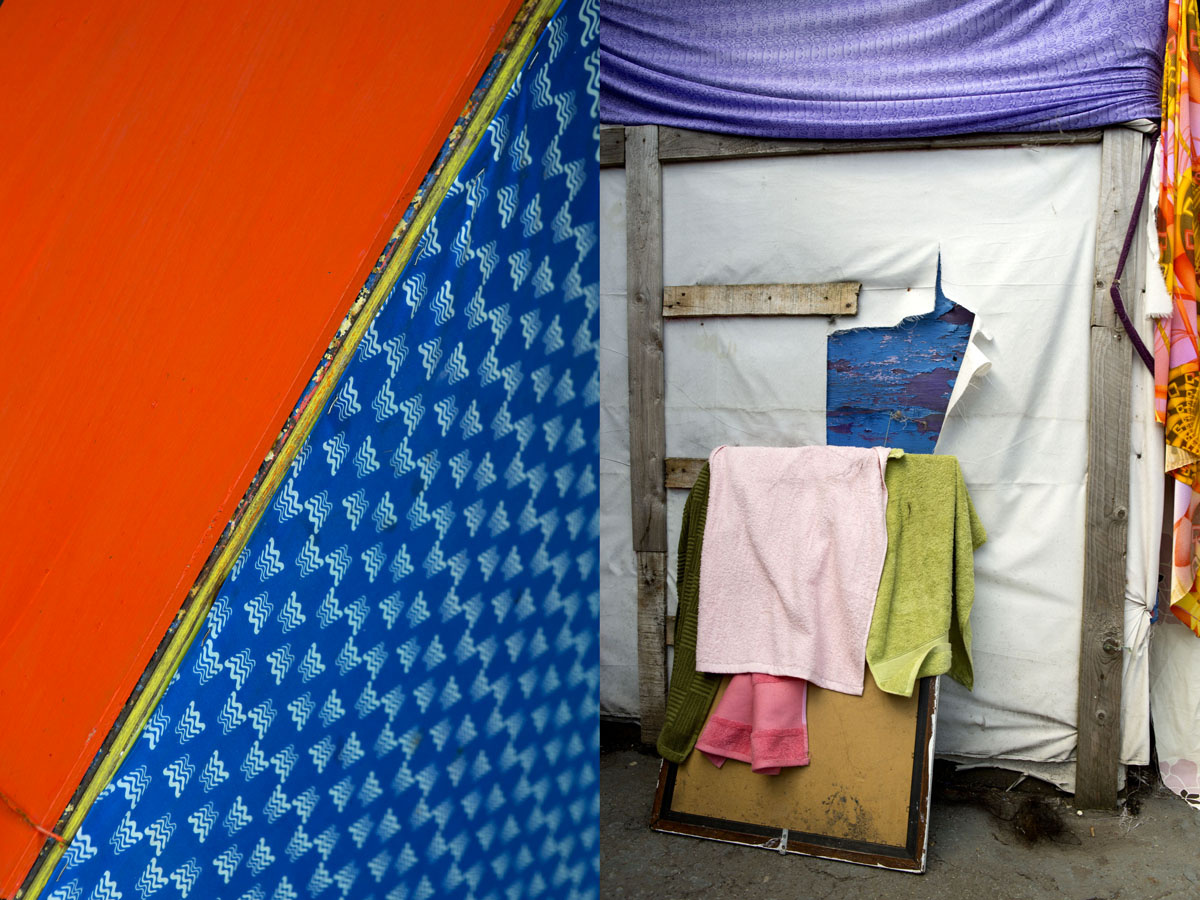
Advertisement

Lorenzo Vitturi: I see a lot of things, because my studio is also my house. It is a really intimate and small studio, and now it is just full of stuff. There is this really colorful corner that I call my "visual mixer." There are some of my pictures, some objects that I got from the market, all the tools that I use, some backdrops… The whole place is quite chaotic really. Is any music playing? Do you have certain habits that help you put order in the chaos that surrounds you?
Afrobeat is the soundtrack to my working days. Music is the best way to create a certain atmosphere. For Dalston Anatomy, afrobeat vibes were the main source of energy—besides food and coffee, of course. I guess coffee is the main drug.

They are the people I met on the street surrounding Ridley Road Market. My pictures consist of a mixture of people, objects, and spaces. Everything is found at the market and then mixed together in my studio. I was interested in finding the visual connections between people, spaces, and objects. This neighborhood has a really strong identity, and I wished to show how those three dimensions were connected to each other. Dalston Anatomy is a research in colors, compositions, and shapes. How did the people perceive what you were doing?
It took me quite a while to have access to the community. Dalston and East London in general are now becoming really hyped, so a lot of photographers are interested in documenting the area. Also a couple of years ago, a few BBC articles circulated that criticized the market and its hygiene conditions.
Advertisement

For example, there were stories about the cane rats sold at the market. Cane rats in Africa are a delicacy, the equivalent of foie gras to us. Of course there was this big headline, stating that in Dalston people are eating dead rats. All this bad publicity generated issues that affected Ridley Road for some time. After that, local people became really cautious towards any photographers or journalists who were coming to the market. How much time did it take you to win their trust?
I’ve been going to Ridley Road Market every day for a couple of years, and I became friends with the people working there daily. I brought them my pictures and even organized an exhibition at the market.

I think people realized what I had been doing for all that time. They saw their products presented in a completely different way—as part of sculptures and compositions. People who had been working in the same stalls for years saw their everyday routine represented in another context, saw the beauty of the shapes and the colors of their merchandise. They told me it was quite an experience to see their heavy 4 AM to 8 PM routine turned into something so colorful. When they finally trusted you, did they share any interesting stories?
Every product comes from different parts of the world and has its own story. For example, there is one picture of a kind of chalk that is sold in the market as a remedy for pregnant women. They use it as a painkiller. How has your view of the area changed?
Now I feel like I a part of the community. I liked the area from the beginning, but I didn’t feel part of it—I was the stranger. Especially in London, being part of a certain community is a very special feeling.
Advertisement

Right now the area is really interesting because of the the mixture of people coming from all over the world and living together. There are the Africans, young artists, the British, those who just moved here to “follow the trend,” and of course the East Enders who were here before everybody else came. I moved here seven years ago, when Dalston was still quite rough, and that’s when I began to experiment with objects found on the street. Eventually I started visiting the market, and at some point I noticed that the neighborhood was changing quite fast. People were forced to move somewhere else because of the drastic increase in rent prices, and new, richer people were becoming locals. For this reason I thought that what I was doing could have been more than a still life; I wanted to portray what this gentrification process was leaving behind. Your sculptures are of a rather ephemeral nature. How does that feel?
That aspect is one of the main points in my work. I am really attracted to ephemeral situations, things that are falling apart and changing. More specifically, the use of organic stuff allows you to see the transformation in a short time, and for me this idea is also connected to the condition of the neighborhood. Apart from the aesthetic side, the notion of change is what I wanted to communicate through my pictures. If your pictures were to collapse in a matter of days, would you still keep on shooting?
Of course. I am currently experimenting a lot on how I present pictures in a show without losing the sculptural side of my process. It would be great to have a picture collapsing in ten or 15 years and to see the transformation of the image during this time. I would be sort of creating a living picture. Of course this is not really clever if you are trying to sell your pictures [laughs], so maybe it is the opposite of what I should be doing.
Advertisement

I think that I am a photographer because it is what I am best at. I've never asked myself this question much because photography was kind of instinctive to me. I started painting in the beginning, but I wasn't such a good painter. Photography was the best medium for me, because I love ephemeral subjects, things that are close to their ends. I believe photography is the best way to deal with this kind of reality.You come from Venice—a city that has this certain quality of an ongoing change, of always being near the end.
Venice has been falling apart for hundreds of years, so if you are born and live there, the knowledge that nothing is stable is something you carry inside you. The whole city is part of a continuous process of aging, and that reminds you of other places where life changes completely every day.

There is space for humor and for irony. I believe irony is one of the most difficult feelings to represent in a picture. It is all about the way you choose to show your subjects. Dalston is going through some serious issues where people are forced to change and move somewhere else.There is a dark side in this case but the changes and movements are creating an animated and energetic atmosphere, which is what I have decided to focus on and present in my work. Dalston Anatomy to me is meant to be seen as a document that represents and tries to preserve the identity of Dalston before everything changes definitively.If you could keep one story from the market, which one would it be?'
I guess it would be that of the cover of my book. I found this beautiful fabric with African prints on it, which actually was made in the Netherlands. Apparently there is this Dutch company that became very successful after selling fabrics with African prints. They have also tried it with Indonesian patterns but it didn’t work out. So for the cover of my book I got an African fabric that in reality is Dutch and is now sold at the Ridley Road Market of East London.Lorenzo Vitturi: Dalston Anatomy opens on August 1 and runs until October 19 at the Photographers’ Gallery in London.